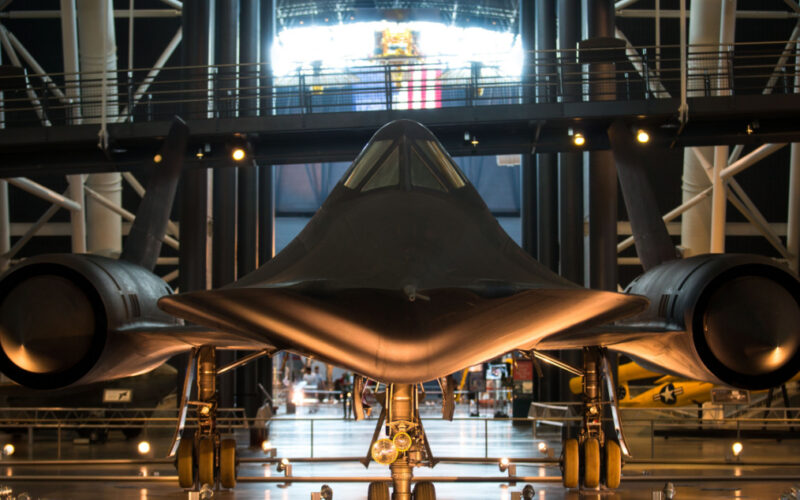The SR-71 Blackbird was an extraordinary aircraft that was developed by Lockheed Martin’s Skunk Works division for the United States Air Force (USAF). It first took to the skies in 1964, marking the beginning of a remarkable era in aviation history.
It was a strategic reconnaissance aircraft capable of conducting high-altitude reconnaissance missions deep into hostile territory with a very high degree of safety and success while staying out of the enemy air defenses. The aircraft was also designed for stealth to avoid being detected by enemy radar.
Design and performance of SR-71
Lockheed’s SR-71 had an impressive performance profile that included a flight range of more than 3,200 miles (about 5,000 kilometers). This allowed for long-range reconnaissance missions over hostile territory without the need for in-flight refueling. To maximize the mission range, it usually refueled mid-air before and after its flight above hostile territory.
The SR-71 Blackbird could fly at speeds exceeding Mach 3 or over 2,000 mph, which made it the fastest plane ever built, though it’s worth noting that rocket-powered aircraft the North American X-15 achieved higher speeds.
This incredible velocity was achieved thanks to two Pratt & Whitney J58 engines, which used afterburners to produce up to 32,500 pounds of static thrust each. The aircraft’s unique design, which included a pointed nose, slender body, and swept-back wings, also helped to reduce drag and increase speed.
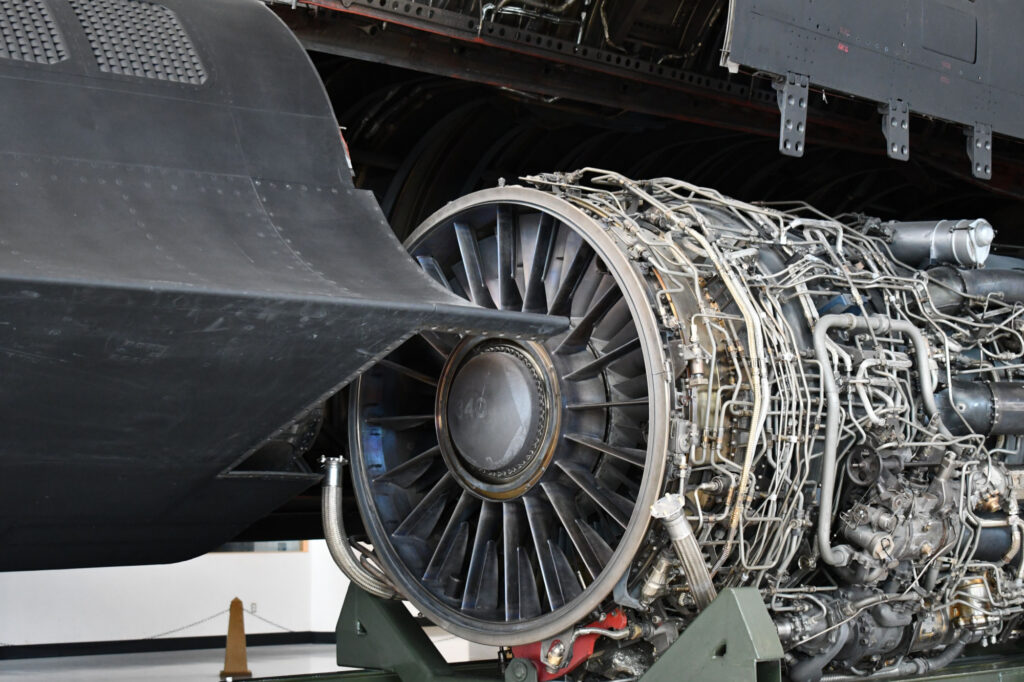
The cockpit of the SR-71 Blackbird was designed to withstand extreme temperatures and pressures at high altitudes. The cockpit included two seats, one for the pilot and one for the reconnaissance systems officer who was responsible for operating the aircraft’s surveillance and communication systems. The cockpit was also equipped with several advanced instruments and displays that allowed the pilots to monitor the aircraft’s performance and gather information during reconnaissance missions.
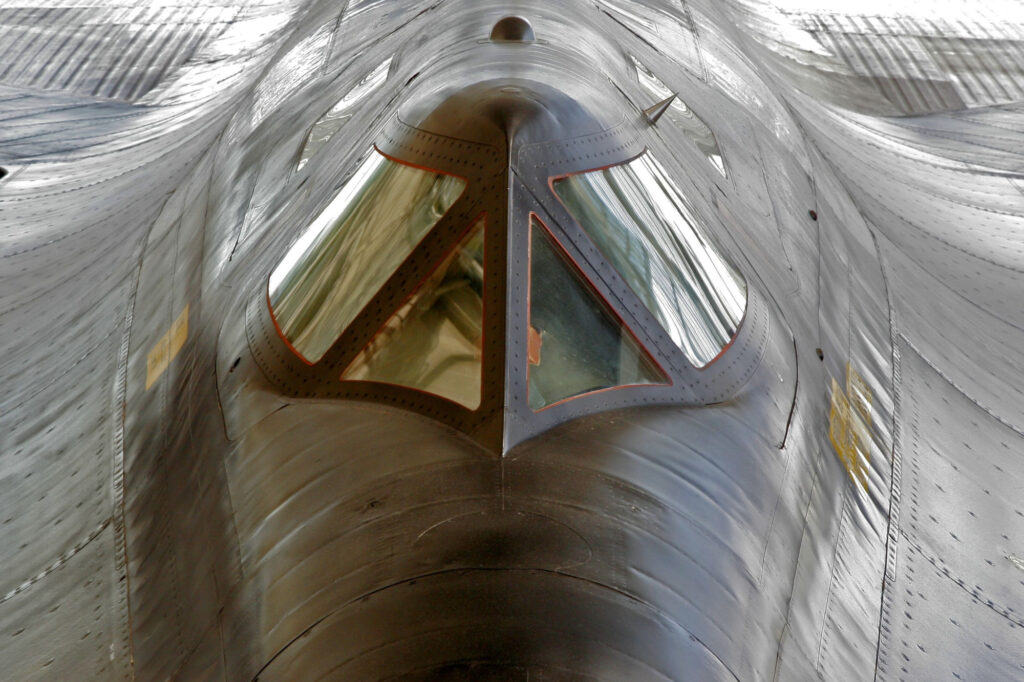
The SR-71 was designed to fly at altitudes of up to 85,000 feet, more than twice the height at which commercial airliners operate. This allowed it to function in a near-space environment where the air is thin, and the temperature is extremely cold. The aircraft’s high altitude also made it virtually invulnerable to most forms of anti-aircraft defenses, as well as radar and visual detection.
The entire plane was also designed to have a reduced radar cross-section (RCS) to make it harder to detect by enemy radar. To achieve this, the SR-71 Blackbird had a unique shape and was constructed primarily of titanium, which has a low RCS. To lower the radar cross-section of the SR-71, the vertical tail fins were constructed using a composite material. Various other measures were taken to reduce the aircraft’s RCS further still, such as coating the exterior with a special radar-absorbent material (RAM).
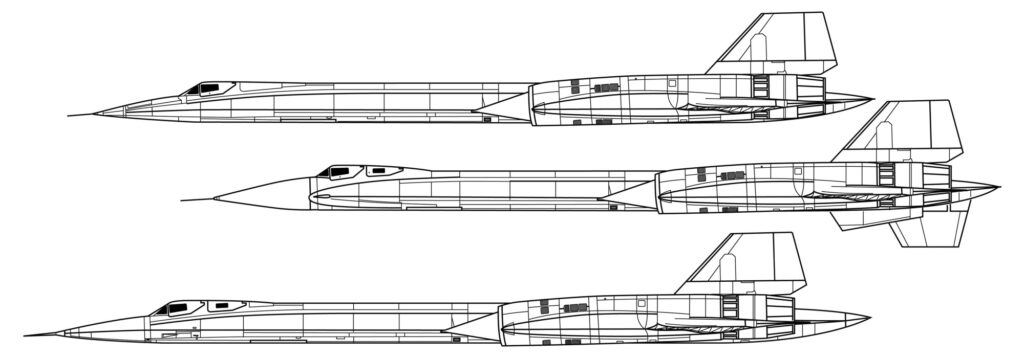
Reconnaissance capabilities
The SR-71 Blackbird was equipped with advanced surveillance and communication systems that allowed it to gather intelligence from long distances. They included cameras, electronic sensors, and data recorders that could capture high-resolution images and other data from long distances, all of which made it an invaluable tool for gathering intelligence in hostile environments. It could operate at night and in adverse weather conditions, which further increased its reconnaissance capabilities.

Historical background of Lockheed’s SR-71
The SR-71 Blackbird played a critical role in the Cold War, where it was used extensively for reconnaissance and intelligence-gathering missions. It was first deployed in 1964 and was used throughout the Vietnam War, amongst other conflicts and operations.
After the USAF retired the SR-71 Blackbird from active service in 1998 due to the emergence of increasingly sophisticated reconnaissance technologies, NASA continued to use two variants of the aircraft (SR-71A and SR-71B) for various research purposes until 1999. The SR-71’s high altitude and speed capabilities made it ideal for conducting scientific research, such as collecting data on the Earth’s atmosphere and testing new technologies.
During its time with NASA, the SR-71 was deployed on a variety of missions, such as studying the effects of supersonic flight on the atmosphere and testing new materials for use in aerospace vehicles. Eventually, NASA made the decision to retire both of its SR-71 aircraft in 1999. This choice was primarily influenced by budget limitations, ultimately bringing an end to the era of the SR-71.
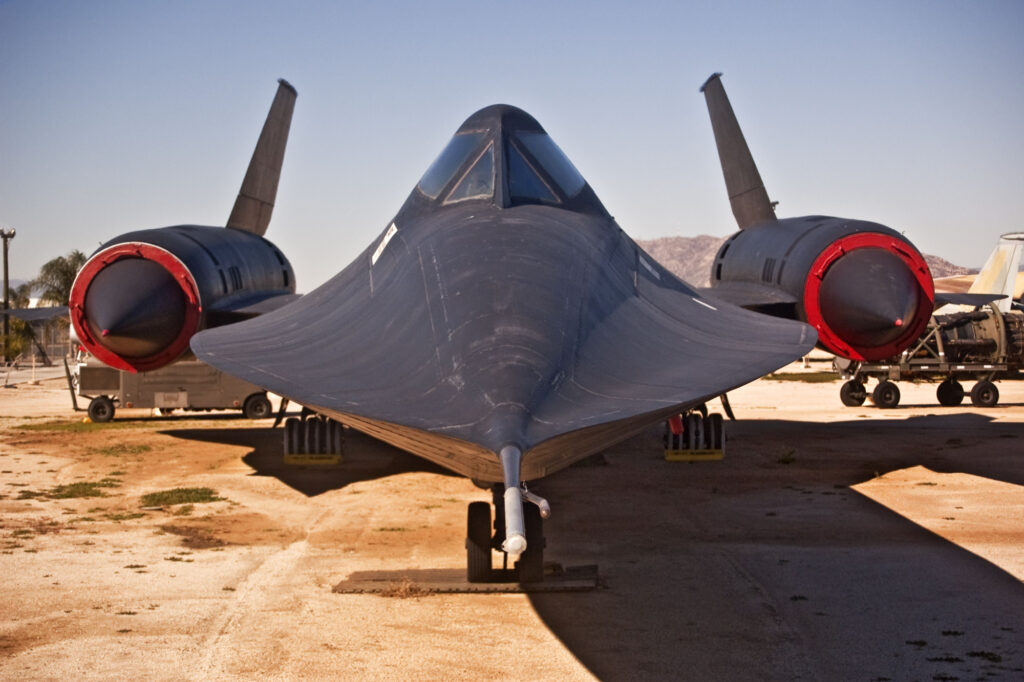
Variants of SR-71 Blackbird
The SR-71 Blackbird had three primary variants: the SR-71A, SR-71B, and SR-71C, all produced between 1966 and 1972.
In addition, there were two related aircraft, the A-12 and the YF-12, which were developed during the 1960s. The specific details of each aircraft are as follows:
- SR-71A: This was the primary production variant of the SR-71 Blackbird, which was in service from 1966 to 1990. It was a two-seater, long-range, high-altitude reconnaissance aircraft that was used by the USAF for intelligence gathering.
- SR-71B: This was a training variant of the SR-71 Blackbird, produced from 1966 to 1968. It had the same capabilities as the SR-71A but was configured with dual controls, allowing for a pilot and instructor to fly together. The SR-71B also had additional windows for the instructor’s seat.
- SR-71C: This was a hybrid aircraft that was created by modifying two existing SR-71A airframes in 1969. It was designed to serve as a trainer for the CIA’s A-12 pilots, as well as to serve as a backup aircraft for the SR-71 program. The SR-71C had a shorter range than the SR-71A, but it could still fly at high altitudes and speeds. It was retired in 1990, along with the SR-71A.
Related aircraft
- A-12: This was a single-seat, high-altitude reconnaissance aircraft that was operated by the CIA from 1963 to 1968. The A-12 was the predecessor to the SR-71 Blackbird, and it was designed to be faster and stealthier than the U-2 spy plane. The A-12 had a slightly longer fuselage than the SR-71 and lacked the ‘chines’ that ran along the sides of the Blackbird’s fuselage.
- YF-12: This was an experimental interceptor aircraft developed by the USAF from 1963 to 1968. The YF-12 was based on the A-12 design but was modified with a larger fuselage and more powerful engines. It could reach speeds of Mach 3.35 and was equipped with a powerful radar system for air-to-air combat. Only three YF-12s were built, and the program was eventually canceled due to budgetary constraints.
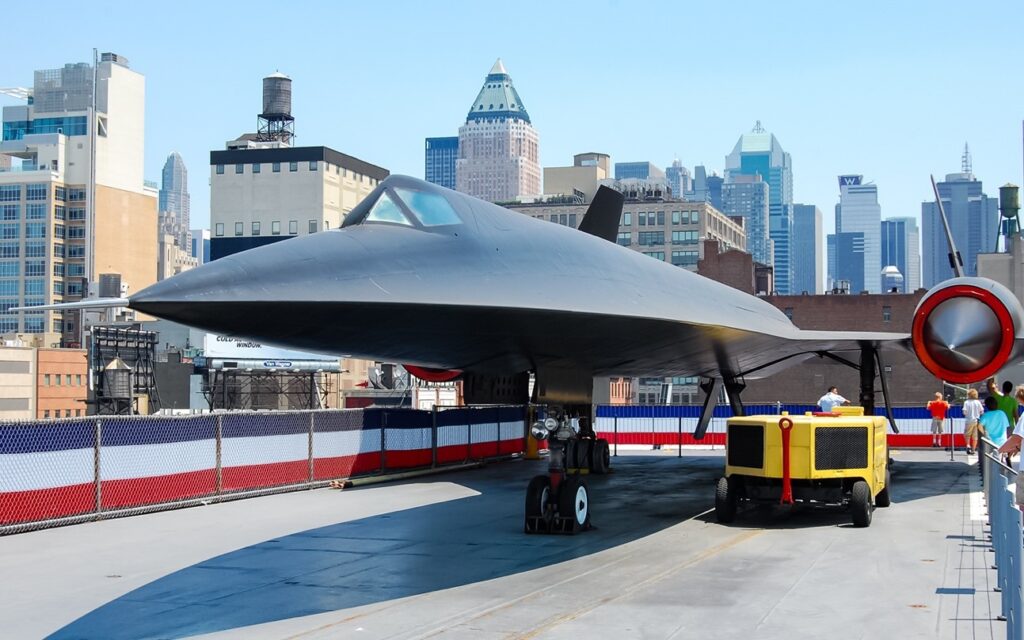
SR-71 key specifications and dimensions
| Manufacturer | Lockheed Martin |
| First Flight | 1964 |
| Retired | 1998 (US Air Force) |
| Crew | 2 |
| Powerplants | 2 × Pratt & Whitney J58-1 continuous-bleed afterburning turbojets |
| Cockpit | Pressure-sealed |
| Shape | Pointed nose, slender body, and swept-back wings |
| Materials | Titanium (up to 93% of the airframe), composite materials, and others |
| Length | 107.4 feet (32.7 meters) |
| Wingspan | 55.6 feet (16.9 meters) |
| Height | 18.5 feet (5.6 meters) |
| Weight (empty) | 67,500 pounds (30,617 kg) |
| Weight (max) | 172,000 pounds (78,018 kg) |
Note: The information in these tables is based on the SR-71A variant of the SR-71 Blackbird.
Watch this video and discover the incredible technology that made the SR-71 Blackbird one of the most invincible aircraft in history.

